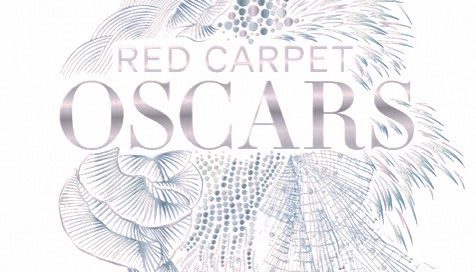
Fashion writer Dijanna Mulhearn’s latest book Red Carpet Oscars, celebrates the glamour and impact on society of Hollywood’s most famous red carpets. The red carpet is so much more than fabulous gowns worn by famous people; it reflects the styles and values of each era and has become a platform to make social statements that capture our attention.
Red Carpet Oscars, with forward by actor and style icon Cate Blanchett, presents over ninety years of fashion worn at the Oscars since its inception in 1929, charting what the stars wore and why. From homemade and pre-loved dresses to ready-to-wear and haute couture, it tracks the style evolution of Hollywood’s leading stars, the commercialisation of the red carpet and the radical shifts that reshaped formal dressing. This comprehensive chronological survey showcases a thousand looks across almost a century. In addition to carefully curated images of the most iconic and inspiring outfits, each entry reveals the stories behind the looks along with the social and political influences of the time.
Who inspired Marilyn Monroe’s signature bombshell look? What did Jane Fonda wear to protest the Vietnam War? Why was Halle Berry’s 2001 dress pitch perfect for her Oscar win?
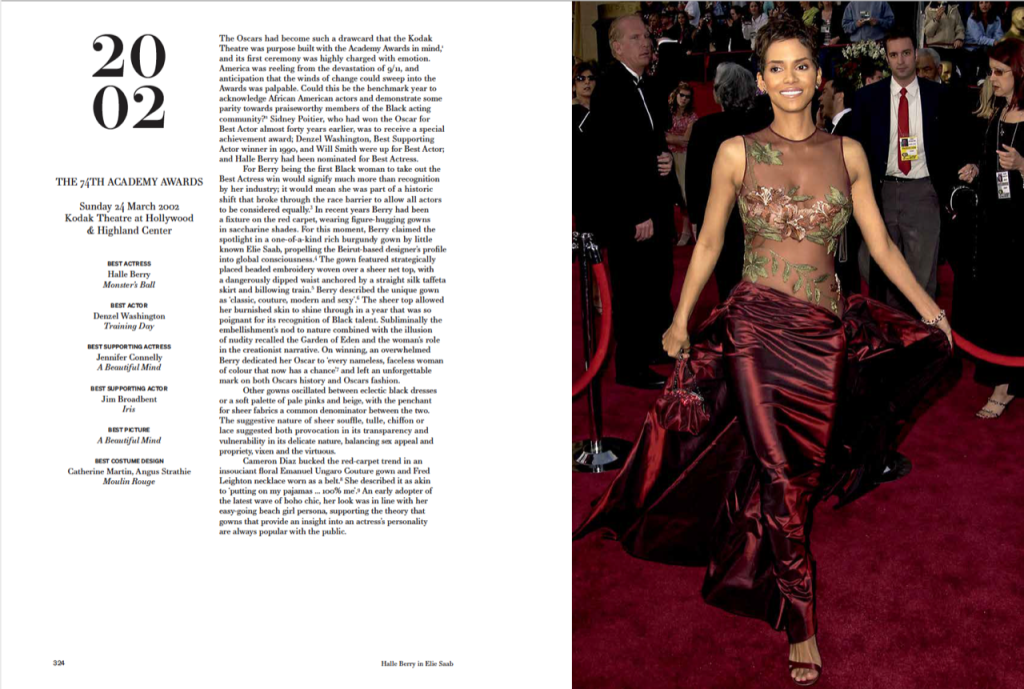
I threw some fashion-inspired questions in Dijanna’s direction and learnt who wore what and why along the way. Enjoy a bit of behind-the-scenes gossip that, on occasion, spoke to what was happening in the broader community at the time. I came away convinced the magic behind successfully pulling off red carpet fashion was a well-thought-out combination of artistic inspiration, knowledge of the craft behind design mixed with a large sprinkling of good old-fashioned Hollywood glamour.
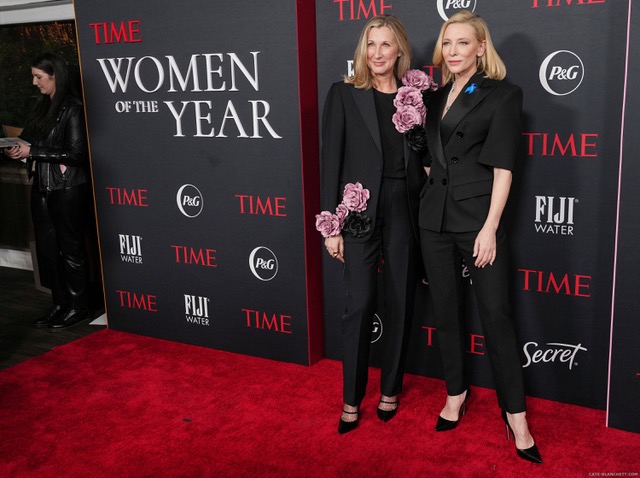
Q: In relation to what actors chose to wear to the Oscars, which fashion choice backstory most captured your attention?
A: There are so many it’s impossible to choose. I love that Olivia de Havilland chose to wear white daisies on her dress in 1950 to signify a fresh beginning after struggling with studio execs and being the brunt of media-hyped sibling rivalry. I love that Joanne Woodward toiled over the sewing machine at home to make the opera coat and gown she wore in 1958, Julie Christie’s 1966 gold lurex pantsuit made with a friend was shocking but not a patch on the mini she scandalised Edith Head with the following year and it’s fun to see why after agonising over two outfits Barbra Streisand chose to go with the see-through ‘party pyjamas’ in 1969. Angie Dickinson was very specific about the inspiration behind her glitzy 1976 Bob Mackie dress, one which he had quite the history with too. The seventies and eighties serve up a cornucopia of influences and stories and I find the reasons why Madonna chose her 1991 fascinating. In recent decades there have been so many stories to tell I could go on for almost 500 pages.
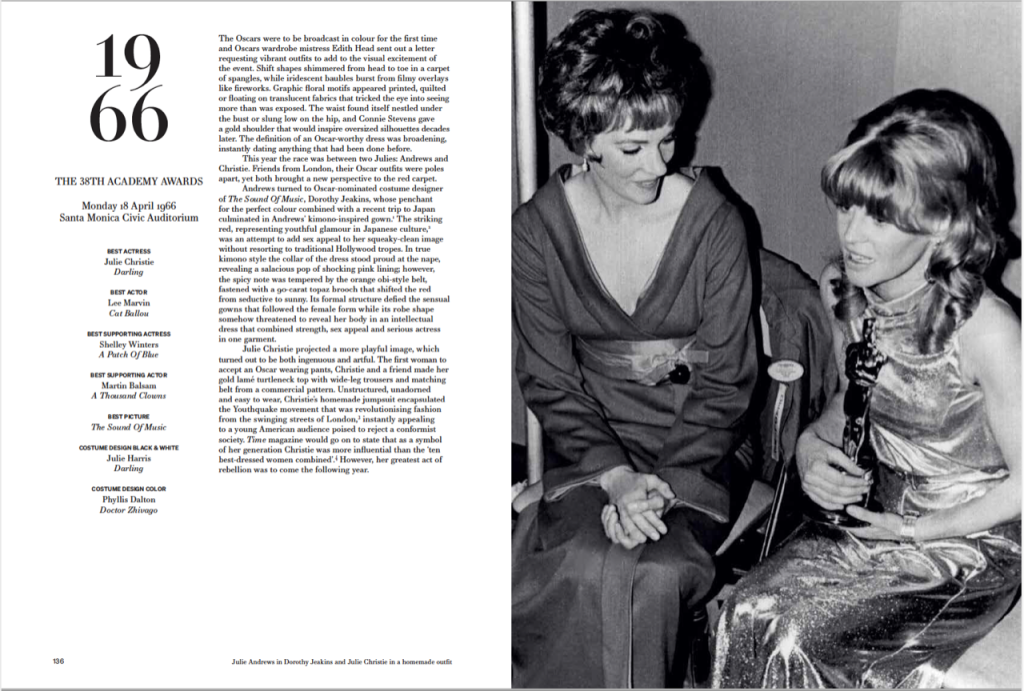
Q: Did a fashion designer’s “look” ever outshine an actor’s Oscar nomination (i.e., did it end up being all about the dress/suit/tux)?
A: I think the person who is responsible for shifting the attention from winners to the red carpet would have to be Cher. Though others have wowed on the red carpet, Cher was the first that had people really anticipating what she might wear. Her collaboration with Bob Mackie since 1973 is legendary and both understood how to get attention and keep it through clothing. Her defiant sartorial statement to the Academy in 1986 for having been snubbed for a nomination for Mask (1984) remains one of the most iconic fashion moments in red carpet history.
Q: Which actor first realised the pulling power (media exposure) that came with wearing a red carpet statement piece?
A: I’d have to say the first was Bette Davis in 1936, where she accepted Best Actress for Dangerous in a maid’s outfit intended for the film Housewife (1934) to protest the studio system treating actors like ‘hired help’ and not allowing actors autonomy when choosing roles. She backed up with another strong statement three years later when she won Best Actress for 1939 for Jezebel and wore an outfit that tapped into traditional royal tropes to position herself as Hollywood royalty.
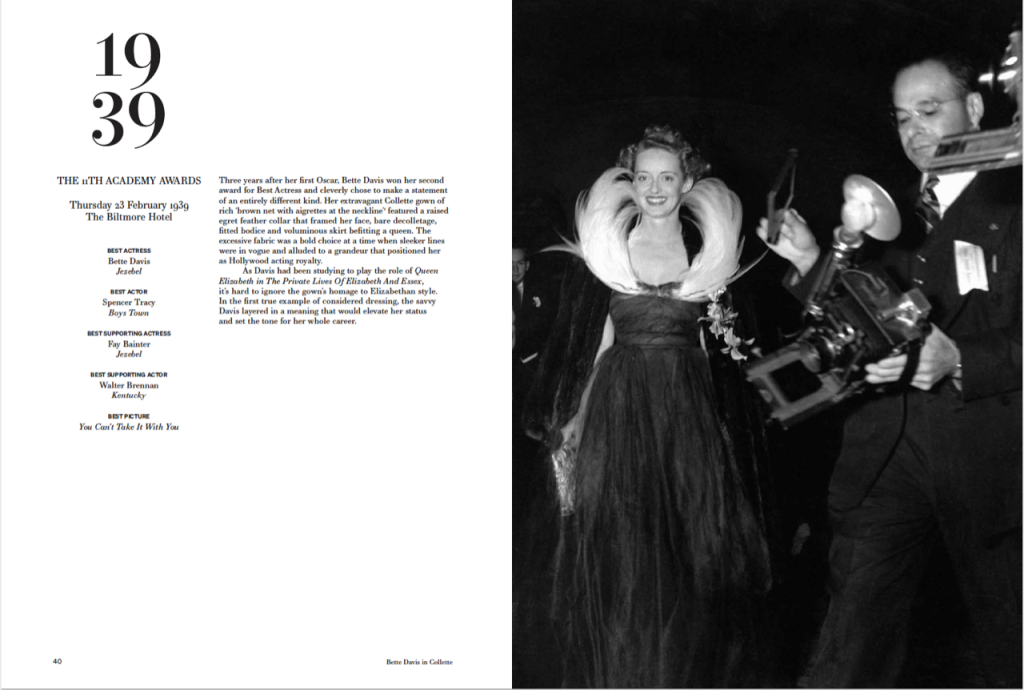
Q: Have Red Carpet fashion trends ever morphed into streetwear designs?
A: Perhaps the closest was in the 1980s when a Jean Harlow style silk satin slip dress became part of street fashion and then found itself back on the red carpet on the likes of Martha Plimpton in 1989 and Courtney Love in 1997.
Q: Name an actor whose creative relationship with a designer pushed the envelope in terms of wearable design.
A: Nothing could possibly beat the Marjan Pejoski Swan dress Bjork wore in 2001. It may have seemed too much at the time, but this avant garde dress has since been featured in a number of major galleries and inspired collections of top-tier designers. There was a second option, a peacock dress by the same designer, but the swan won out on the day, gracing an artist that could herself be termed a rare bird.
Q: If you could choose one of the outfits in your book to wear to the Oscars, which would it be?
A: Definitely Marlene Dietrich wearing Christian Dior in 1951. This was a meeting of two fashion masterminds who would become icons and the Dior dress in which Dietrich strode onto the stage was perfection. Every detail from the shape, colour, length and strategically positioned side split was deliberately selected for maximum impact. At 51 years of age, when Hollywood was most definitely agist, Dietrich managed to outshine all the other stars.
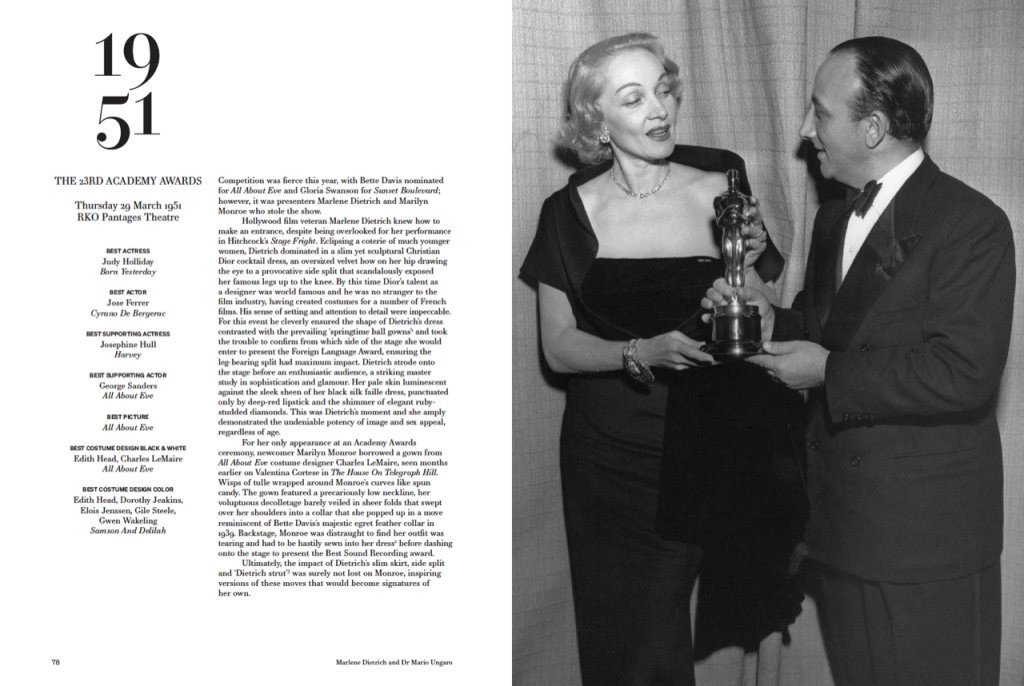
Dijanna Mulhearn is a Sydney-based author whose obsession with the transformational properties of clothing began at the age of 11. Her fashion career has grown from retail and marketing to public relations and author. She has a Master’s Degree in Communication Design and voraciously consumes all manner of literature and studies on semiotics and the subliminal effect of clothing. This is her third book on fashion with Thames & Hudson.
You can purchase Red Carpet Oscars at bookshops or visit: www.booktopia.com.au/red-carpet-oscars-dijanna-mulhearn/
Elise Hawthorne interviewed Dijanna Mulhearn for Only the Good News
Photo credits: images are lifted directly from the Red Carpet Oscars book (except for the one featuring Dijanna Mulhearn + Cate Blanchett).






Get Social